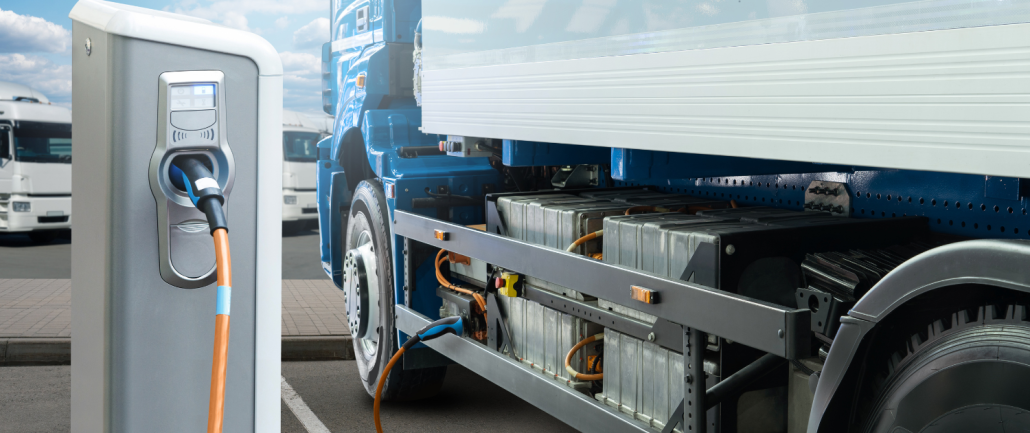
In today’s highly regulated transportation industry, fleet compliance is more than just a legal obligation. It’s a foundational element of safe, efficient, and responsible operations.
Whether you’re managing a private fleet, for-hire vehicles, or a mixed operation, staying compliant with government and industry standards helps protect your business, drivers, and the public.
Keep reading to discover what every carrier should know about fleet compliance, and some best practices and preventative measures to maintain compliance.
What Is Fleet Compliance?
In general, fleet compliance refers to following a wide range of rules, regulations, and standards set by federal, state, and local authorities that govern commercial trucking.
These rules are in place to promote road safety, protect the environment, and ensure fair labor practices. While it can feel like a complex web of paperwork and oversight, compliance is essential to avoiding fines, preventing accidents, and keeping your fleet operating without disruption.
Key Areas of Fleet Compliance
Fleet compliance involves several core areas that every U.S.-based trucking company must manage carefully. All carriers operating within the United States are required to follow regulations set by the Federal Motor Carrier Safety Administration (FMCSA).
Here are five critical areas that form the foundation of fleet compliance
Driver Hours of Service (HOS)
The FMCSA sets limits on how long drivers can be behind the wheel and how much rest they must get. These rules are in place to prevent fatigue-related accidents.
HOS Rules Include:
- Maximum of 11 hours driving after 10 consecutive hours off duty
- 14-hour limit on total workday
- 60/70-hour limit over 7/8 consecutive days
Compliance Tip: Use Electronic Logging Devices (ELDs) to automatically track and record driver hours and flag violations in real time.
Driver Qualifications and Licensing
All drivers must hold the appropriate Commercial Driver’s License (CDL) and meet specific qualifications, including medical certification.
Required Documents:
- Valid CDL with correct endorsements (such as tanker, HazMat, etc.)
- Medical Examiner’s Certificate
- Driver Qualification (DQ) file, including driving records, previous employment verification, and road test results
Compliance Tip: Keep DQ files up to date and conduct annual reviews of motor vehicle records (MVRs). These documents are often important for essential tasks such as insurance underwriting, safety audits, and verifying driver eligibility.
Vehicle Inspections and Maintenance
Proper maintenance is essential for road safety and compliance. FMCSA regulations require routine inspections and detailed maintenance records for each commercial vehicle.
Minimum Requirements:
- Daily pre-trip and post-trip inspections
- Annual DOT inspections
- Preventative maintenance schedules
Compliance Tip: Use fleet management software to track inspections, repairs, and ensure timely servicing.
Drug and Alcohol Testing
To maintain a safe working environment, carriers are required to implement drug and alcohol testing programs for drivers operating commercial motor vehicles.
This is when testing is required:
- Pre-employment
- Random testing
- Post-accident
- Reasonable suspicion
- Return-to-duty and follow-up
Compliance Tip: Partner with a certified consortium or third-party administrator (TPA) to manage your testing program.
Emissions and Environmental Standards
Trucking companies must also comply with environmental regulations concerning emissions and fuel usage, especially for fleets operating in states with stricter guidelines like California.
Considerations Include:
- Use of clean diesel or alternative fuels
- Compliance with state-specific emissions laws (such as CARB regulations)
- Regular engine diagnostics to ensure emissions systems function properly
Compliance Tip: Stay updated on evolving EPA and state-level guidelines and plan for fleet upgrades or retrofits if necessary.
Why Fleet Compliance Matters
Non-compliance can lead to serious and consequences, including:
- Costly Fines and Penalties: Violations can result in thousands of dollars in fines per infraction.
- Out-of-Service Orders: Vehicles or drivers found to be non-compliant can be taken off the road immediately.
- Higher Insurance Premiums: Poor safety ratings and compliance scores can drive up your operating costs.
- Legal Liability: In the event of an accident, lack of compliance can increase your company’s legal exposure.
- Reputation Damage: Customers want to work with safe, reliable carriers. Compliance supports trust and long-term business relationships.
Best Practices for Staying Compliant
Maintaining fleet compliance is a year-round effort, involving your entire team. Here are some recommendations to ensure your fleet remains compliant.
- Invest in Compliance Management Tools: Fleet management platforms can automate tracking for HOS, maintenance, inspections, and more.
- Train Staff Regularly: Ensure drivers, dispatchers, and office personnel are updated on current regulations and best practices.
- Conduct Internal Audits: You shouldn’t wait for a DOT audit, perform your own regular checks to identify and fix issues early.
- Keep Records Organized: Maintain digital or physical copies of all compliance-related documents and ensure they are accessible during inspections.
- Work with Experts: Consider hiring or contracting compliance specialists or consultants to help keep your company up to speed.
Fleet compliance isn’t just required; it’s a vital part of running a successful and responsible trucking business.
For more ways to stay ahead of the curve in the transportation industry in 2025, be sure to check out the rest of our Employer Blog posts and connect with us on social media.













